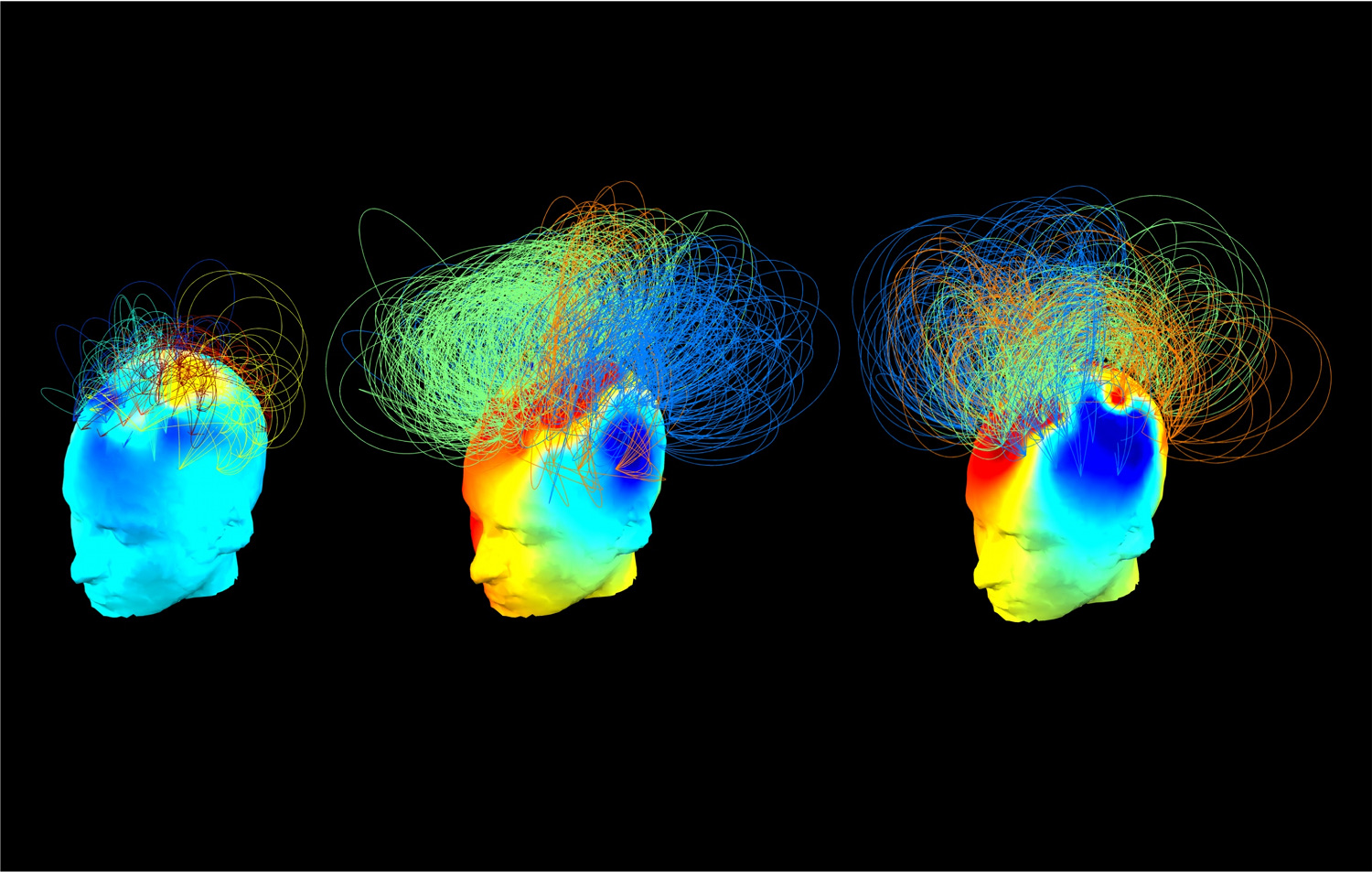Awareness in a Damaged Brain
While people in a vegetative state appear physically unresponsive, a new study reveals that some might be aware to a degree.

Srivas Chennu and his team developed a technique that draws on data from EEG tests to develop this image, which he refers to as a "brain network plot." The colored regions illustrate connectivity in brain networks in patients with brain damage (left and middle) and in a person with a healthy brain (right). What’s surprising is the apparent similarity between the middle patient and the healthy one. Courtesy of Srivas Chennu
These multicolored mohawks aren’t decorative. They illustrate connectivity in brain networks in patients with brain damage (left and middle) and in a person with a healthy brain (right). What’s surprising is the apparent similarity between the middle patient and the healthy one.
In the picture, “the height of the arc over the head represents the strength of the connection, and the colors represent groups of [brain] areas that are strongly connected to each other,” says Srivas Chennu, a cognitive neuroscientist at Cambridge University in the United Kingdom. He created the image—which relies on a technique his team developed that draws on data from electroencephalogram (EEG) tests—as part of research for a study that appeared last month in PLOS Computational Biology.
Chennu’s team tested 32 patients, 13 of whom were vegetative—a brain-damaged state wherein someone experiences “wakefulness without awareness,” according to Chennu, meaning that despite appearing awake, the person seems unable to respond to anything willfully.
Using an EEG to read the brain’s ongoing electrical signaling during resting states, they identified activity in three of the 13 vegetative patients that resembled the activity in a healthy adult’s brain. Furthermore, when those three patients were placed inside a magnetic resonance imaging (MRI) machine and asked to imagine themselves playing tennis, their brains’ motor areas also showed activity similar to a healthy adult’s. In other words, the patients apparently understood the request, which indicates that they were aware to a certain degree.
The patient depicted in the middle of the image above stood out during both the EEG and MRI tests—he showed the most robust brain connectivity among the patients with brain damage, despite the fact that he exhibited no external signs of awareness.
“I was astounded by the strength of the connections in that particular patient,” says Chennu. But, he adds, “We still don’t really know why that is the case.”
The findings don’t prove that vegetative people with strong brain activity experience consciousness like a fully sentient person does, says Chennu. But they do suggest that these individuals experience some form of consciousness yet to be described.
“We move away from asking, ‘Is this person conscious like I am?’ to asking, ‘What sort of consciousness do they have?’” says Chennu. “We’re still trying to figure out what it is like to be in their shoes.”
The research could help lay the groundwork for scientists developing tests that can identify varying levels of awareness in vegetative patients, according to Chennu. In the long run, tests like these could result in more tailored care for people in these states.
Emma Bryce is a freelance science writer whose articles have appeared in publications such as The Guardian and Audubon.